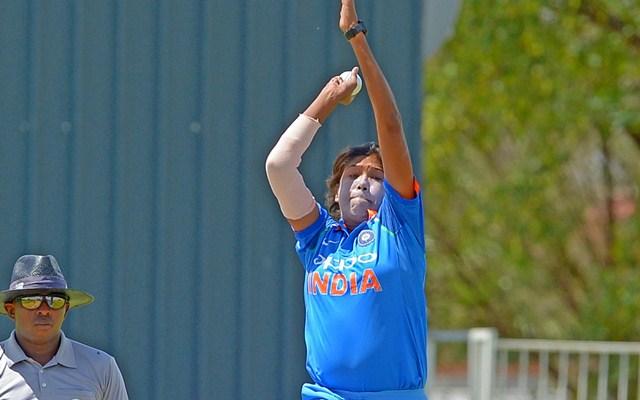ICC Women's World T20 2018: Jhulan Goswami reflects on the growth of Women's cricket
"The brand of cricket in big tournaments has just been getting more watchable," she reckoned.
View : 356
3 Min Read


Jhulan Goswami, one of the most respected women’s cricketers in the world, has reflected on her time in international cricket and also looks ahead to the ICC Women’s World T20 2018. The tournament’s league matches will be played in Guyana and St Lucia from 9-18 November with the two semifinals and the final in Antigua on 22 and 24 November, respectively.
In an exclusive first-person column for the ICC, which is available at www.icc-cricket.com, the 35-year-old fast bowler form Bengal writes that the women’s teams were now planning and preparing well advance for the global events, which not only speaks for the profile of women’s cricket but also enhances the quality of cricket and adds to excitement and entertainment.
Now teams have become so competitive, they are preparing really well and everyone is planning years in advance,” writes Goswami at www.icc-cricket.com, adding: “The brand of cricket in big tournaments has just been getting more watchable, and the last year in particular has set the bar very high. I expect that to go even higher in the ICC Women’s World T20 2018.”
There’s been a massive change
Jhulan is the only bowler in women’s cricket with over 200 ODI wickets, while she also took 40 wickets in 10 Tests. She once led the MRF Tyres ICC Women’s Player Rankings for ODI Bowlers, before announcing her retirement in August from the shortest format ranked 30th after making 68 appearances.
There’s been such a massive change to women’s cricket since I started playing. I remember staying in an accommodation with bunk beds for my first World Cup, in 2005. For domestic matches, we often travelled unreserved in trains, and played on grounds where getting injured would have been very easy. There were countless junior tournaments where we stayed in dormitories and slept on mattresses on the floor,” reflects Goswami.
“I recall so many funny memories when I think about multiple teams sharing one bathroom. Back then, the IWCC (International Women’s Cricket Council) and the WCAI (Women’s Cricket Association of India) did a very creditable job with the resources they had.
But we could really see the difference in the 2009 World Cup in Australia, which was the first one organised by the ICC.
“The ICC Women’s World Cup 2017 took things one notch higher, and it was one of the best World Cups I have played in. In terms of facilities, there was hardly any difference between a men’s World Cup and a women’s World Cup.
“We travelled in business class, got rooms in five-star hotels, inter-city travel was in luxury buses with internet and daily allowances equal to men’s event. All we had to do was go express ourselves on the field. The TV coverage and the tremendous traditional and digital media meant there was unprecedented hype – otherwise sometimes the public doesn’t even realise when an ICC Women’s World Cup comes and goes.”
[interaction id=”5be24dbcfb8f64b7494b2190″]
Get the latest Cricket News and updates, Match Predictions, Fantasy Cricket Tips and lots more on CricTracker.com.
Download Our App